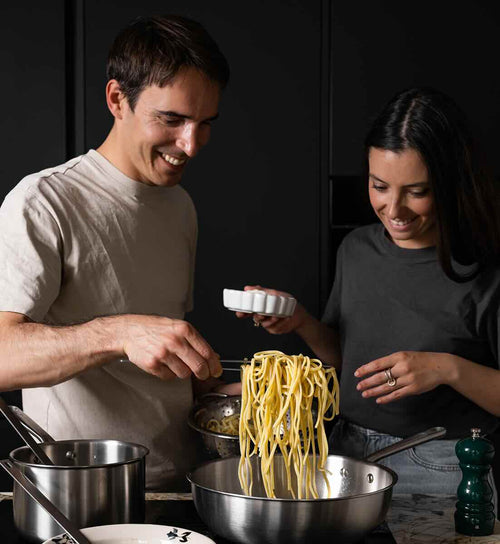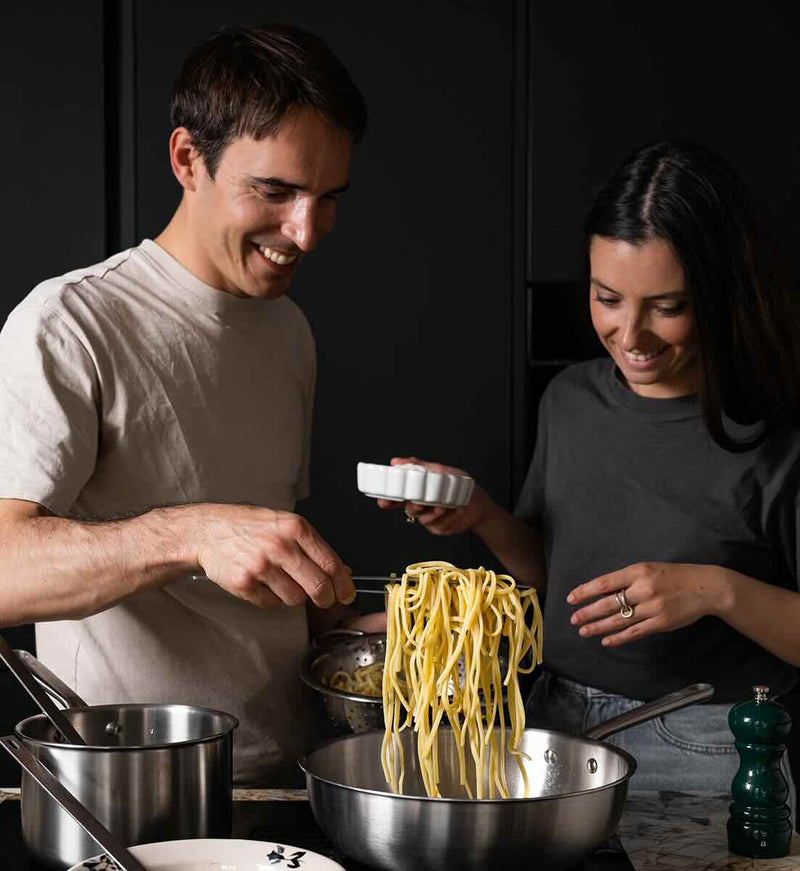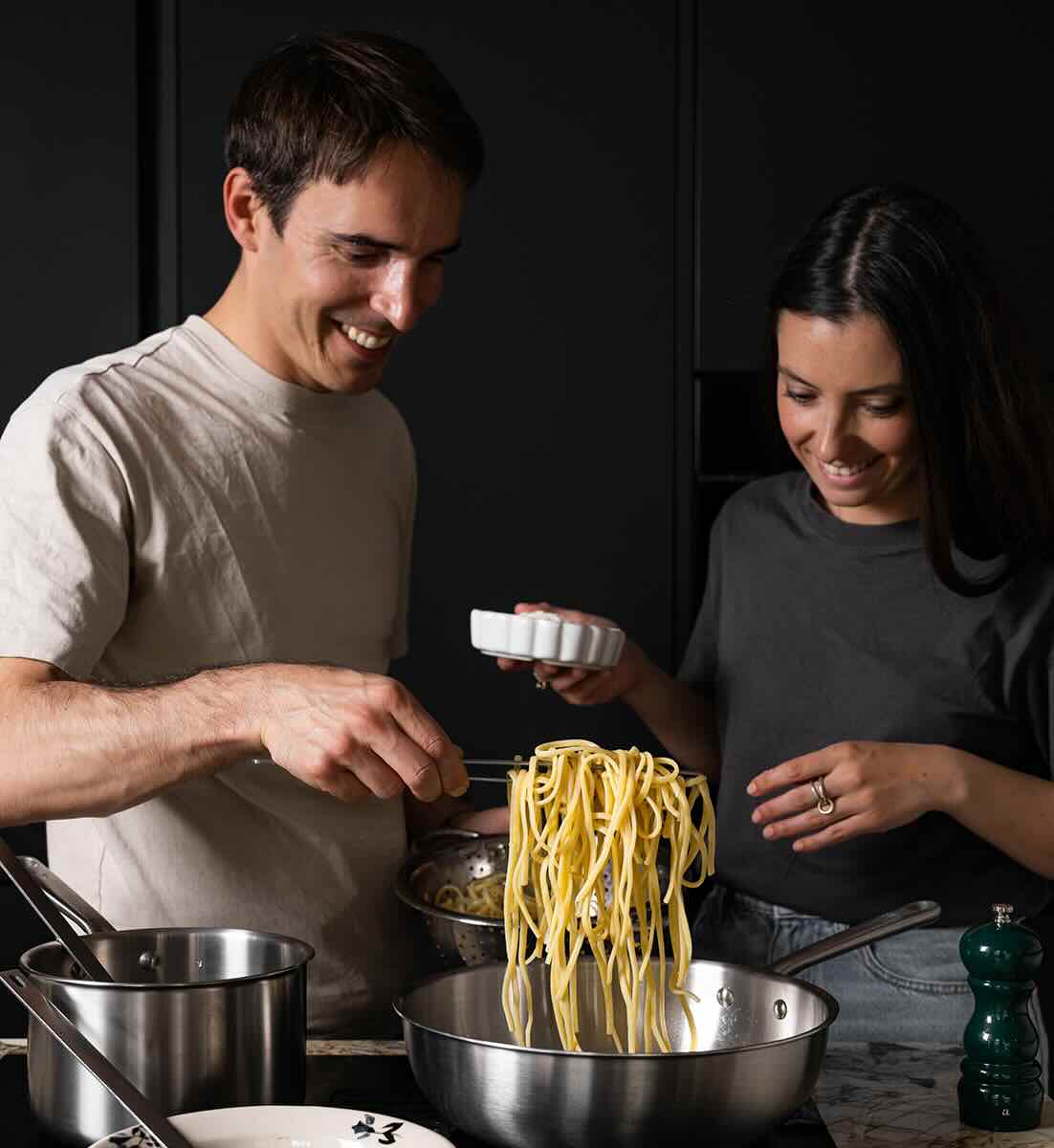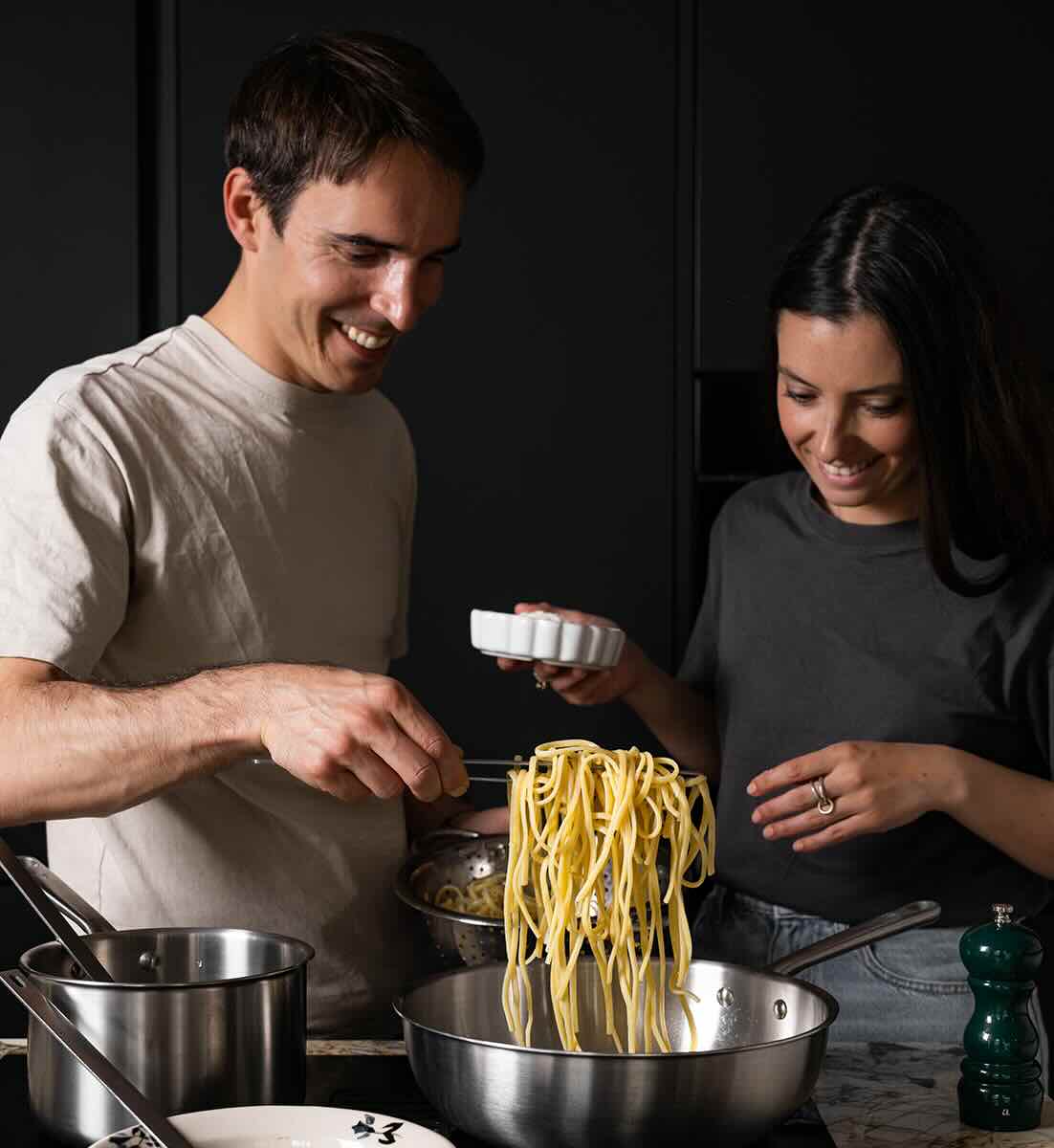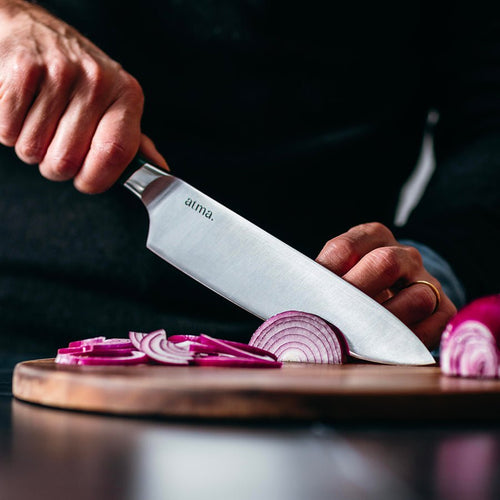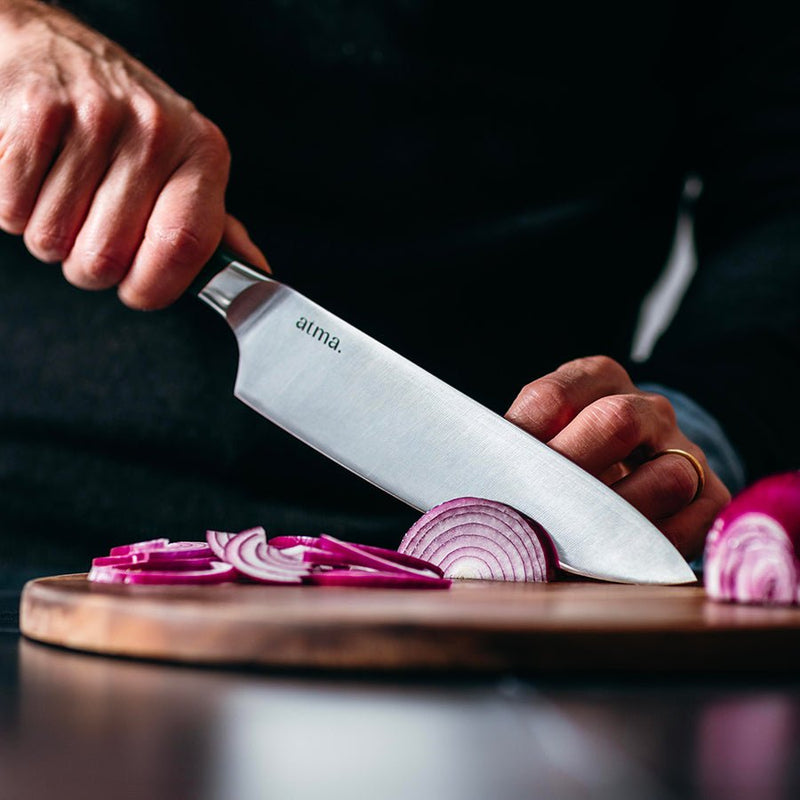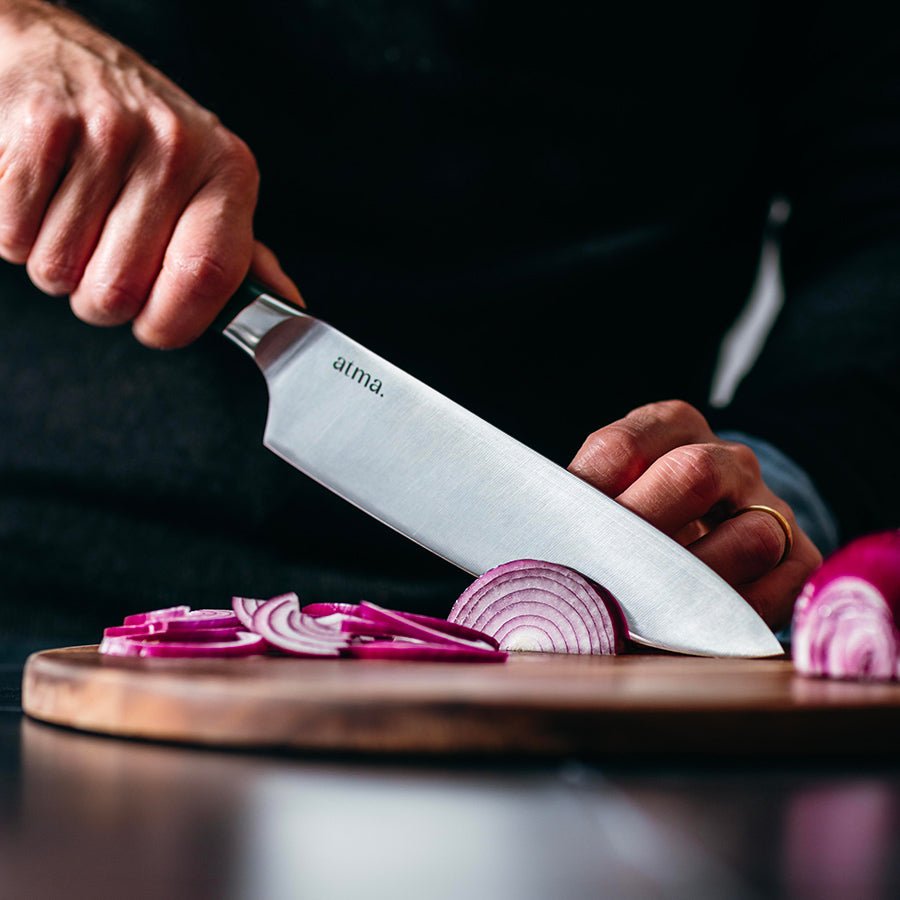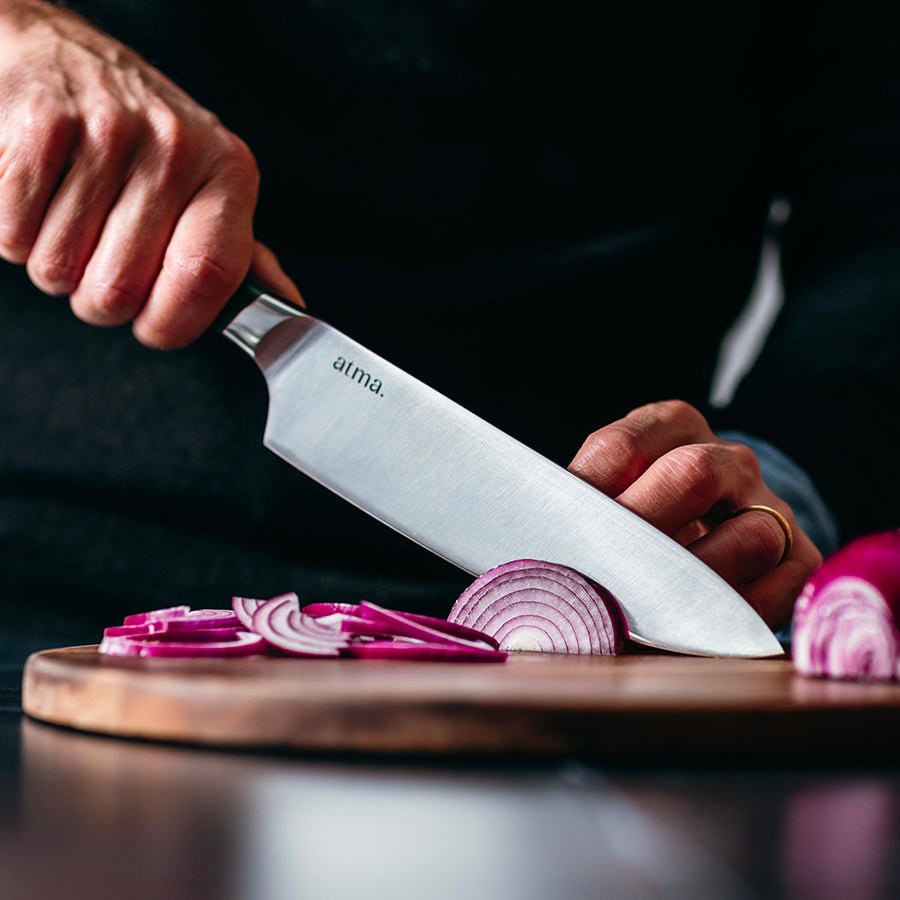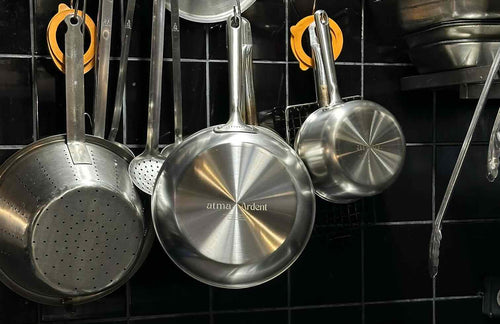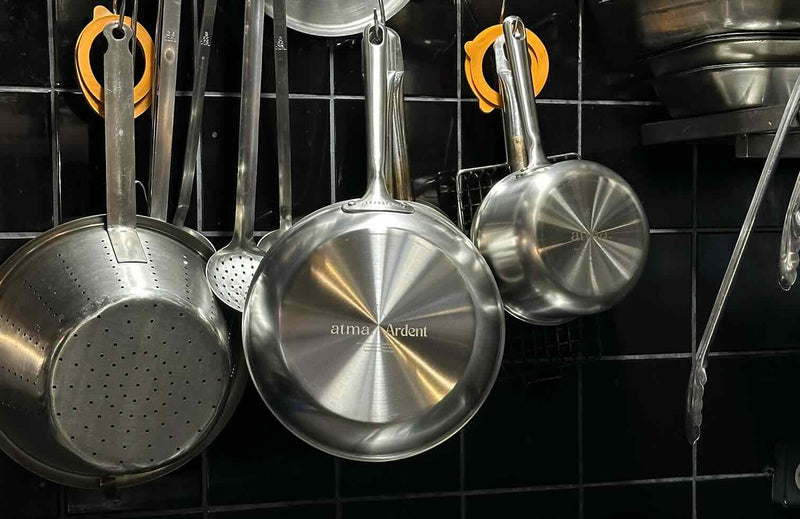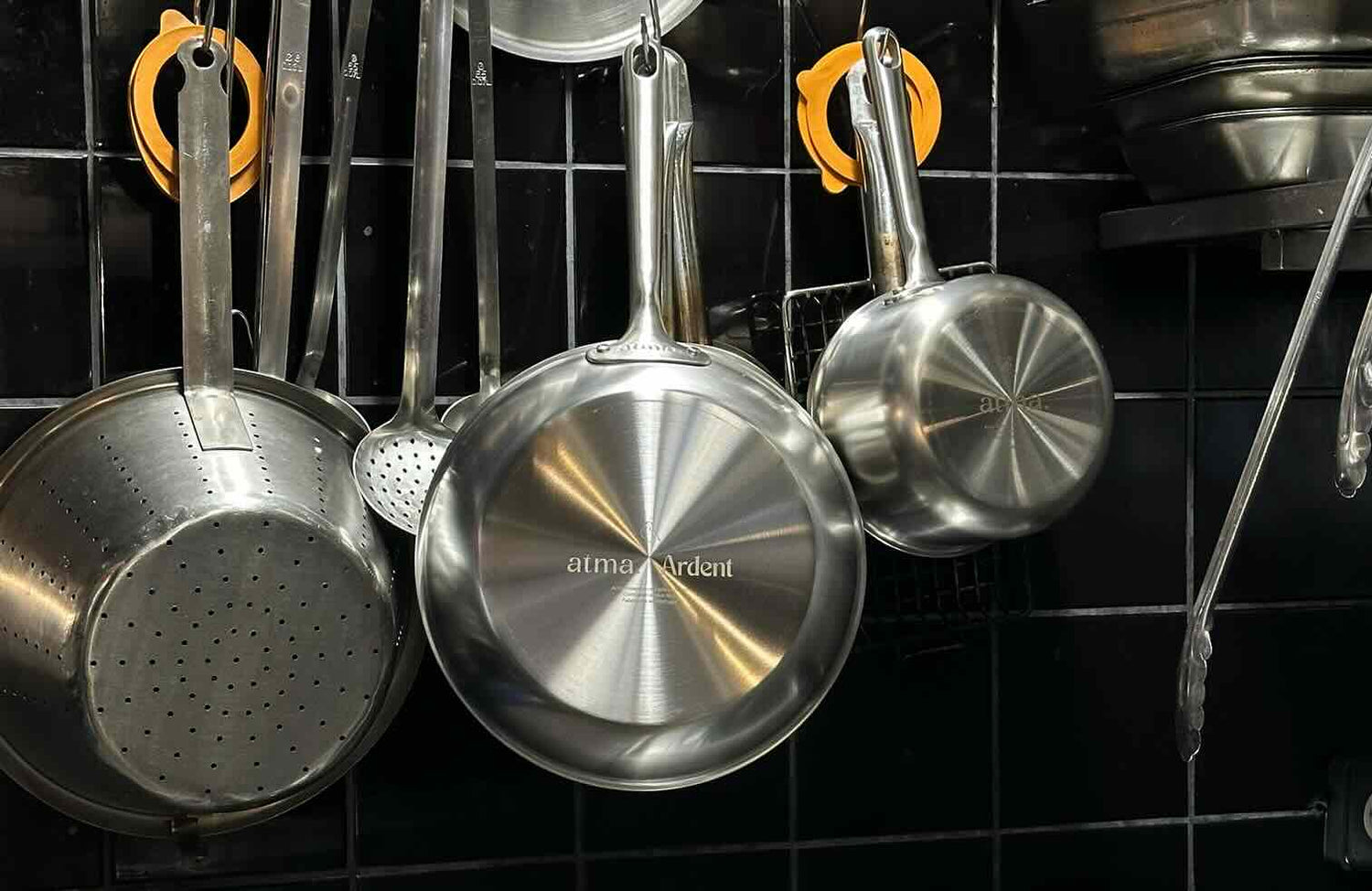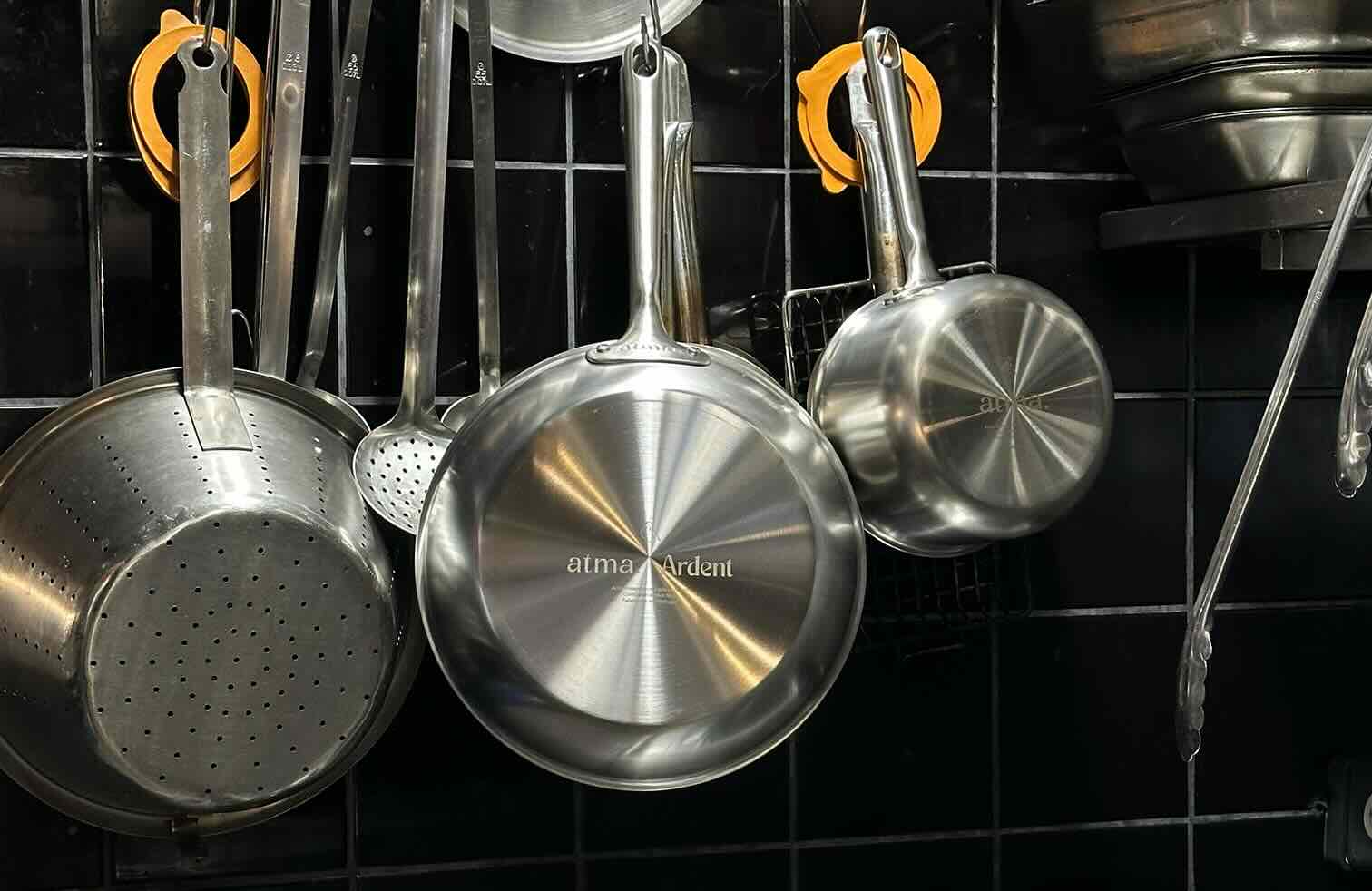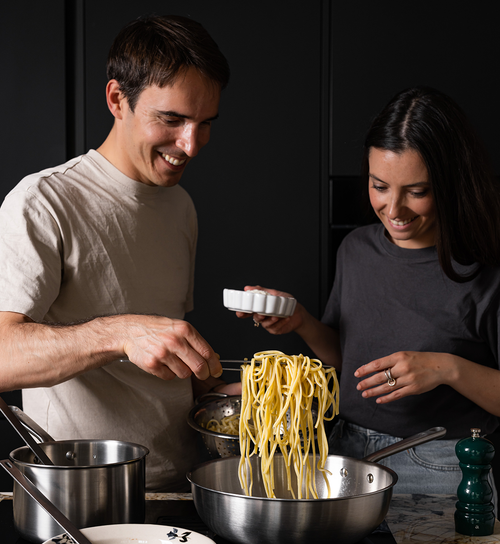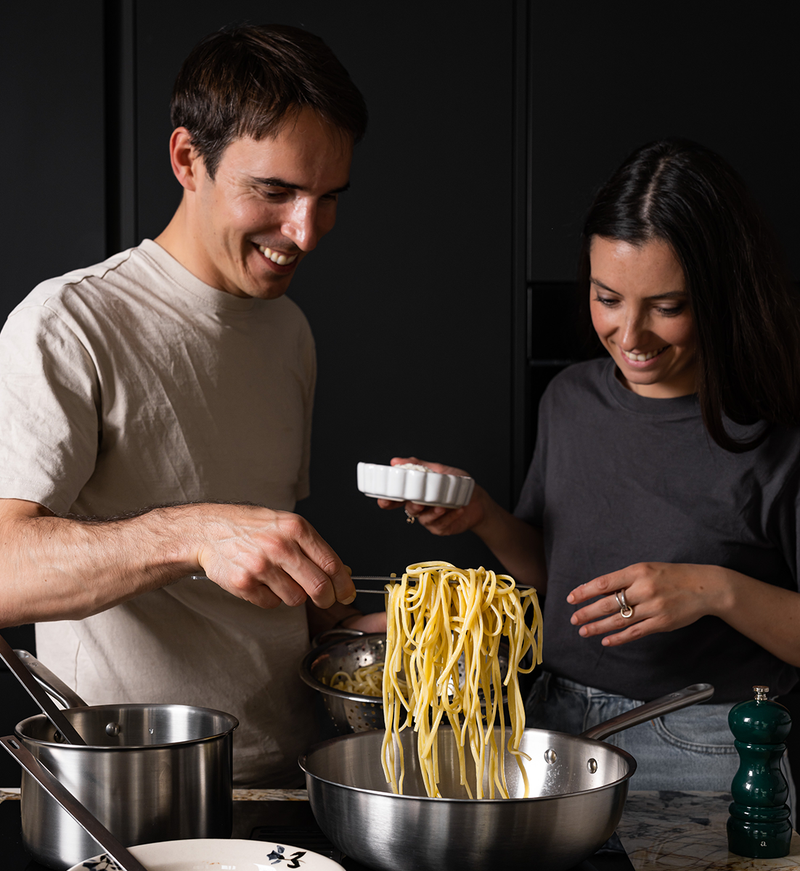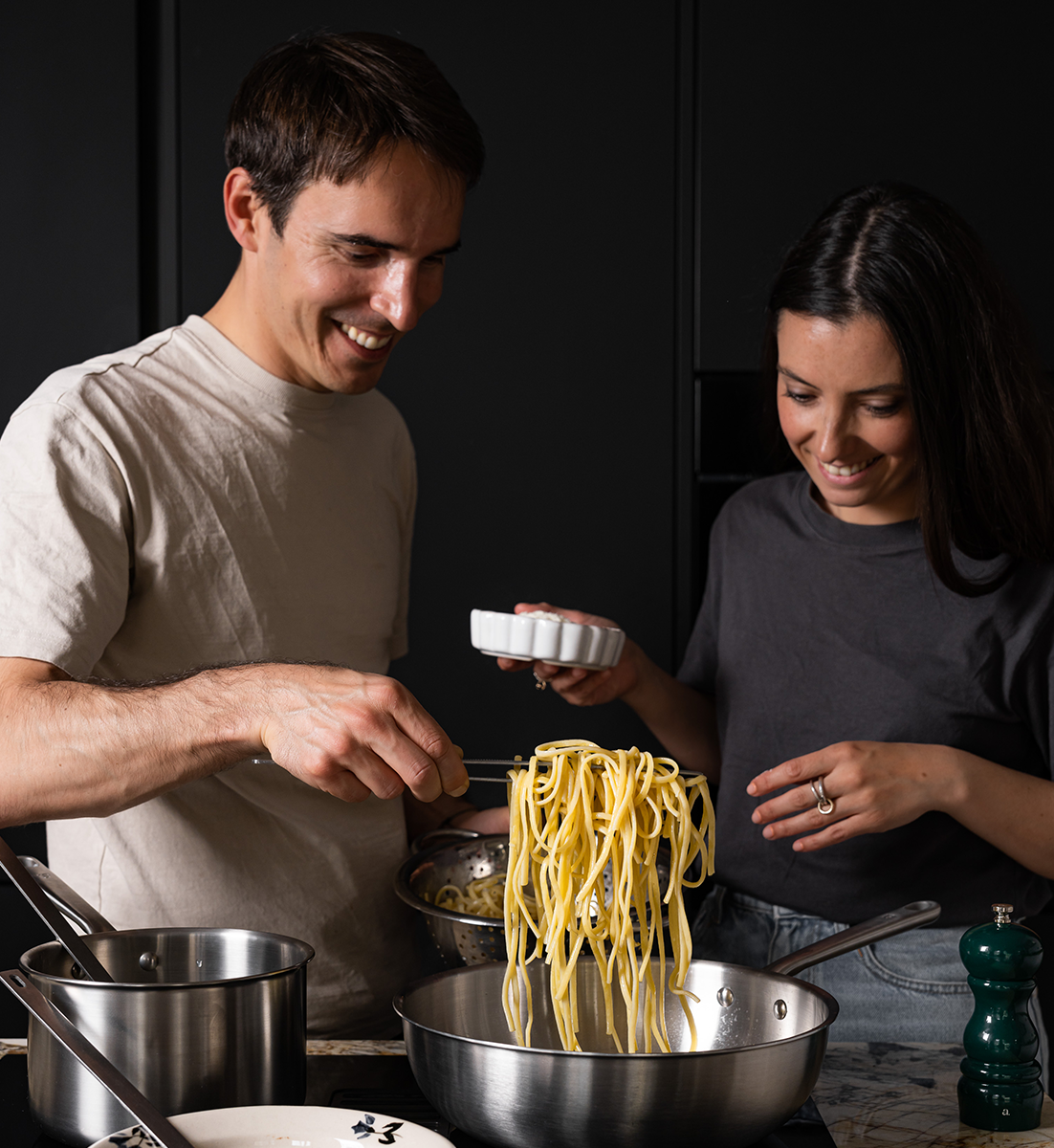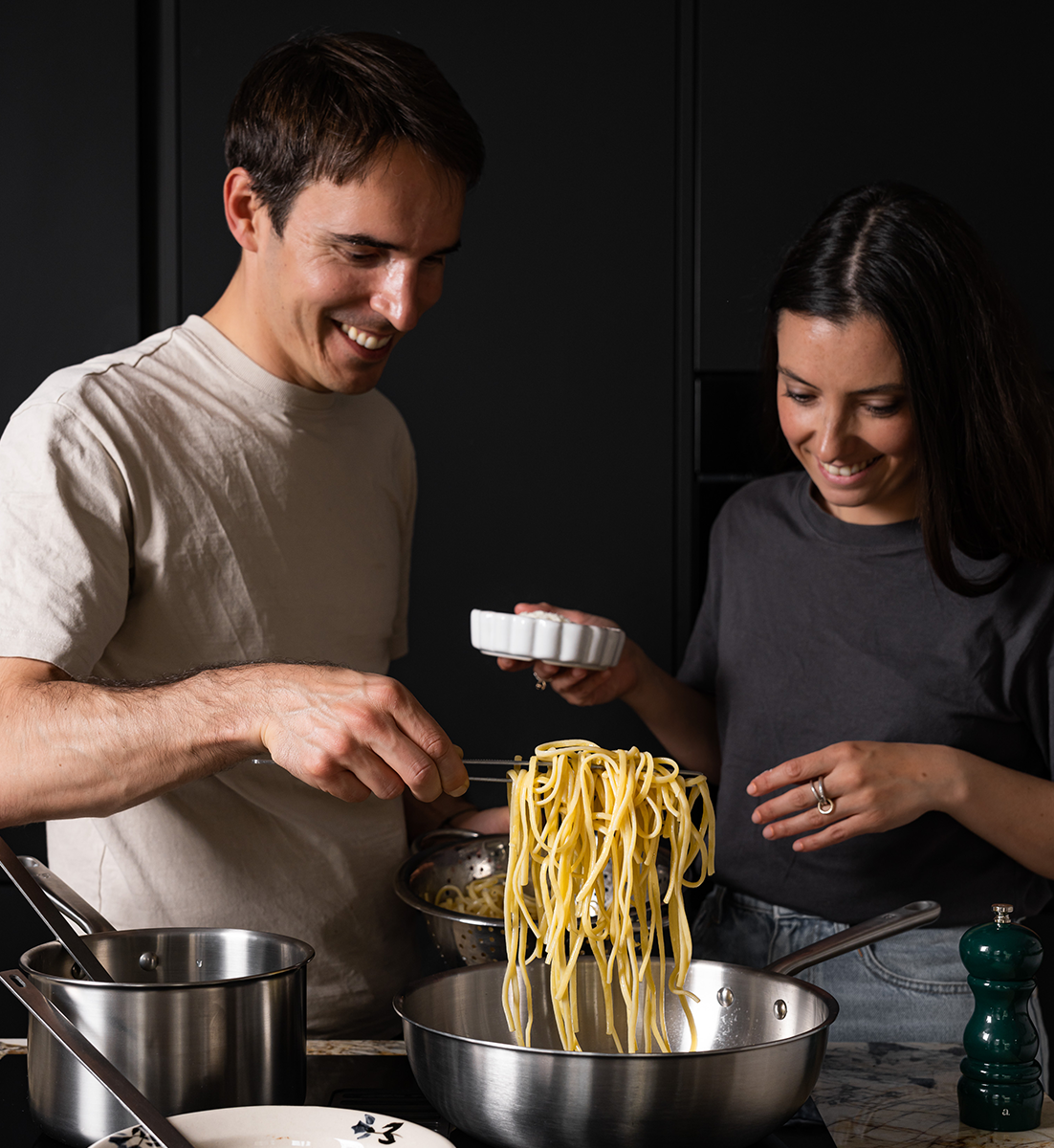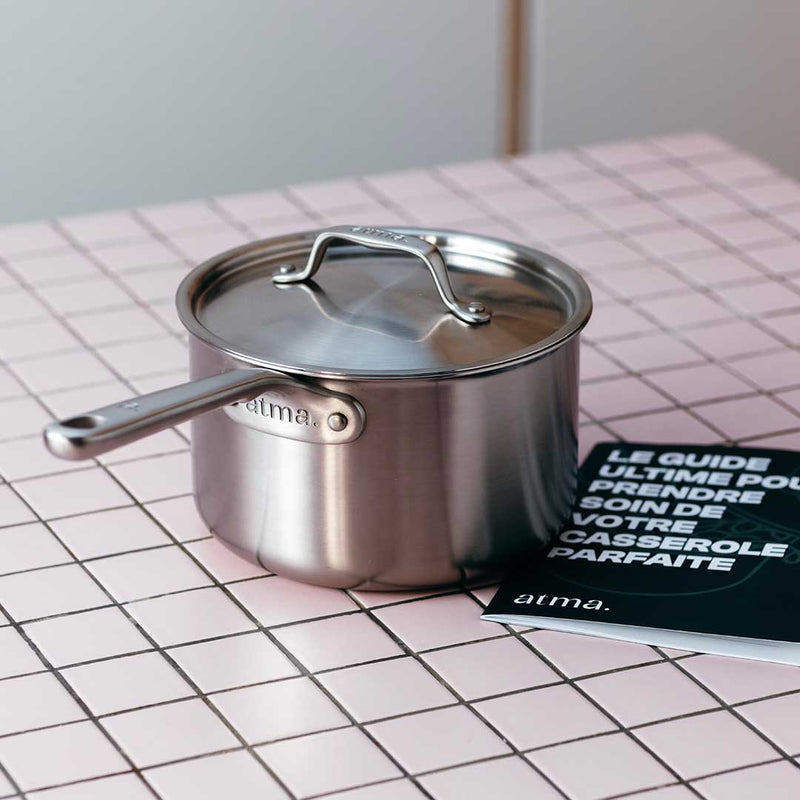Many of you are wondering about this, and that's completely normal! While working on our stainless steel cookware, we wanted to understand the pros and cons of seasoning to determine whether we should recommend it to our customers. To cut the suspense short, here's our answer: seasoning is a very personal choice, and at Atma, we don't necessarily recommend doing it for your pans. Our stainless steel pan set can therefore be used immediately. The question of whether or not it's necessary to season a stainless steel pan often sparks debate among amateur chefs. Seasoning is a process commonly associated with cast iron or iron pans, and involves creating a non-stick surface using oil or fat. So, does this technique also apply to stainless steel pans?
In our opinion, stainless steel pans, which are known for their durability, rapid heat-up, or performance, don't necessarily need to be seasoned, for two reasons.
The first reason is that with the right techniques, food should not stick to your stainless steel pans. We wrote a dedicated article on this topic, on how to cook with a stainless steel pan. But to go over the main steps here, it's important to start by preheating your pan, do the water drop test to check that it's at the right temperature, then add your fat and then your food, and finally let a first crust form. If you follow these steps, food shouldn't stick to your pans. Feel free to visit our YouTube channel to see all of our tutorials dedicated to cooking in our stainless steel pans.
The second reason is that once seasoned, you can no longer clean your pan in the dishwasher or with strong cleaning products. Not that this would damage your pan, but the strong detergents will remove the thin layer of grease that constitutes the seasoning.
Seasoning a stainless steel pan can offer benefits. First, it helps reduce the risk of food sticking, making cooking easier. By forming a protective layer of polymerized oil on the surface of the pan, a natural barrier is created between the food and the metal, minimizing the risk of sticking.
The seasoning process is simple and the same as for a cast iron or iron pan. Start by heating the pan over medium heat. Then apply a thin layer of vegetable oil to the entire surface, including the sides. Let it heat for about 10 to 15 minutes, then remove the pan from the heat and let it cool. Then wipe off any excess oil with a paper towel. Repeat this process several times to strengthen the non-stick layer. You can find many tutorials online to show you how.
But be careful, as we mentioned above, to maintain a seasoned pan, avoid the dishwasher at all costs. Cleaning is done with hot water and a dish brush, especially to remove any drippings. If marks persist, you can apply a tiny drop of dish soap to hot water and scrub. Finally, every 3 or 4 uses, add a drop of vegetable oil to the bottom of the pan and wipe the entire surface to remove any grease and firm up the seasoning.
Ultimately, the decision to season a stainless steel pan depends on personal preference and individual use. If you're looking for a stronger non-stick surface, seasoning may be a viable option. However, if you're happy with the performance of your stainless steel pan without seasoning, it may not be necessary to go this route.
















